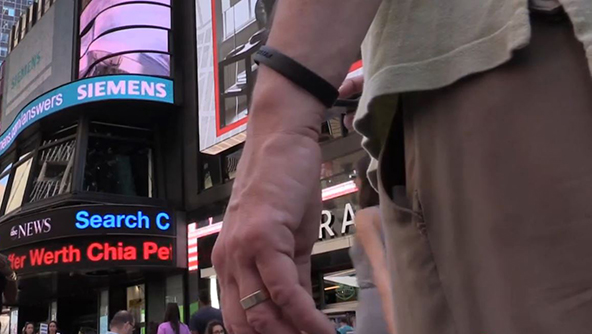Wearable Chemical Monitor Could Make Big Impact on Workplace Chemical Safety
Posted on May 31, 2017 | in Environmental Compliance

New wearable technology has the potential to turn chemical exposure testing on its head.
We’re living in an age when wearable technologies (wearables) regularly demonstrate the potential to massively disrupt traditional models and systems. Devices like Fitbit — bracelets which automatically track and analyze wearer movement data — offer users unprecedented access to fitness measurement information, and can easily interface with computers, mobile devices, and even social media. It’s estimated that the global market for wearables will reach $1.4 billion in 2016, and established technology companies are rushing to enter the market. Apple’s introduction of the Apple Watch earlier this year is a great example. And while not every new wearable catches on — remember Google Glass? — each carries at least the potential to change the game.
Now it appears that wearables developers have turned their attention to hazardous chemical safety.
Imagine a worker who verifies the chemical safety of his or her own workplace by discreetly wearing a bracelet for a week or two. Imagine an OSHA inspector who does not appear to be sampling a worksite for chemical exposure, but is in fact doing exactly that, through the use of wearable technology.
Last week, USA Today reported that Oregon-based MyExposome has developed a wearable chemical exposure monitor. Similar in appearance to a Fitbit, the silicone band is designed to be worn by a single user for anywhere from 24-hours to a month. When the desired monitoring period is up, the user mails the band to MyExposome, which analyses the band and sends the user a list of all chemicals to which he or she has been exposed, and at what levels. According to the MyExposome website, the device checks for over 1,400 common hazardous chemicals, including PCBs, endocrine disrupting compounds, and pesticides.
A new company, MyExposome faces many hurdles bringing this device to the wider marketplace, but also has considerable momentum behind it.
In the hurdle category, the bracelets currently cost $1,000 apiece, with a minimum order of twenty. (For comparison, Fitbits start at around $100, and Apple Watches around $350.) In addition, an attempt to crowdfund $50,000 for the company earlier this year failed.
On the momentum side, organizations like the Environmental Defense Fund have rallied to support MyExposome, even organizing a trial pilot project. There has also been support in the political arena. Jeff Merkley, Democratic senator from Oregon, issued a press release praising the MyExposome wristband and participated in the product launch.
Whether or not this particular wearable is ultimately successful, the cat is out of the bag; personal chemical exposure monitoring is now possible with something as simple as a silicone wristband. And as time passes, these devices will likely only get more widely available and less expensive. The implications for the safety and compliance community should be staggering.
Maybe not this year, and maybe not next year. . . but in the very near future it will be easy for workers, customers, and enforcement agencies to quietly and accurately sample the chemical exposure levels of their surroundings using wearables. This will make maintaining a workplace safe from hazardous chemicals more important than ever before.